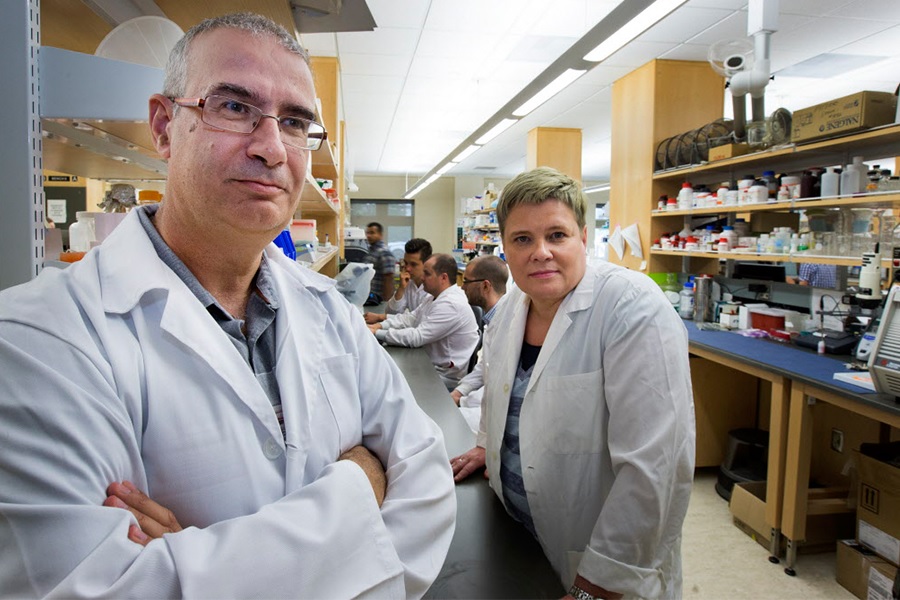
Designing depression diagnosis
The challenge with mental health is we don’t have clear biomarkers that confirm diagnoses - Dr. Lisa Kalynchuk
By Kris FosterFor any number of diseases—think heart disease, cancer and diabetes—there are tests that diagnose and guide treatment. Diseases related to mental health are an exception.
“If you have a lump you think is cancer, you take a biopsy and look for abnormal cells and pathological changes,” said Lisa Kalynchuk, a professor of neurology in the College of Medicine. “The challenge with mental health is we don’t have clear biomarkers that confirm diagnoses of mental health issues or addiction and what’s the best available treatment.”
Typically, someone feels depressed and goes to his or her doctor, and a “subjective diagnosis is made,” explained Kalynchuk, who works with animal models to better understand biological causes of mental health problems.
The next step is to prescribe a drug, wait a few weeks and possibly prescribe a second and third drug option with more time dedicated to the wait-and-see approach.
“It is hit-and-miss and there is no clear pathway based on rationale. It is very tough on the patient and is an inefficient and costly way to deal with mental health.”
Enter Hector Caruncho, professor in the College of Pharmacy and Nutrition, who, in 2006, began collaborating with Kalynchuk.
“I was working with a protein called reelin,” explained Caruncho, whose research focuses on neuropharmacology. “In post-mortem brain samples I discovered a deficit of reelin in those with mental illness like schizophrenia or manic depression.”
Caruncho and Kalynchuk started to work together in an animal model of depression that Kalynchuk had developed in an attempt to find a biomarker that could indicate if someone was depressed or not.
“We discovered in depressed lab animals that this reelin protein caused molecules to cluster differently on cell membranes,” said Kalynchuk. “We thought that this cluster pattern could be used to predict patients with depression.”
The team decided to look at lymphocytes, or white blood cells, as changes in the immune system might be responsible for mental health issues, she explained, adding that they enlisted between 50 and 60 patients in Spain who were recently diagnosed as depressed by psychiatrists.
Those patients were given a quick blood test that allowed the researchers to examine how proteins in the white blood cells moved and clustered serotonin on the cell membrane.
“Using fluorescents, we made the patterns glow. We saw two types of protein clustering: fewer clusters of bigger size and more clusters of smaller size.”
The patients with fewer, but larger protein clusters, responded to antidepressants while the other group did not.
“From this we know that it’s possible that this patterning of protein clustering might predict who will respond to treatment,” she explained.
Further yet, Kalynchuk continued, those who are unlikely to respond can save the time wasted on the first treatment option and move on to more aggressive drugs or options like behavioural therapy.
Caruncho and Kalynchuk will now attempt to validate the idea and look at other protein clustering—as well as hundreds of additional patients they are recruiting from Spain, the U.S. and Canada—“to replicate and better understand the data so we can validate if we have indeed found a predictive biomarker,” explained Caruncho.
“From there, we need to develop a kit for primary care doctors that will allow them to administer the blood test in the office and get results back in 24 hours,” Kalynchuk explained, adding that they are currently working with a finger prick and blood smear test.
The team is also developing an agreement between the U of S and a Spanish institution to collaborate on this work.
“Can we make this work with other mental health issues? Maybe we can find biomarkers for manic depression or schizophrenia. Is there some way to help with addictions? We think this is a concept that can move this field forward,” said Kalynchuk.
